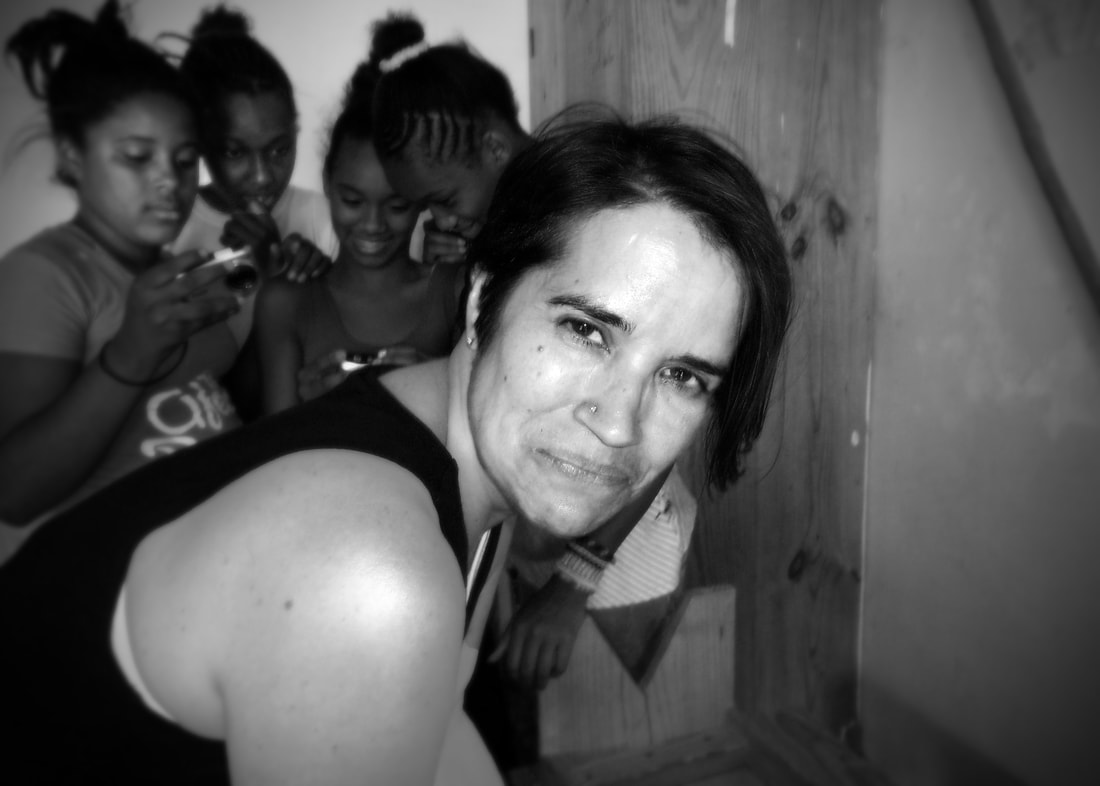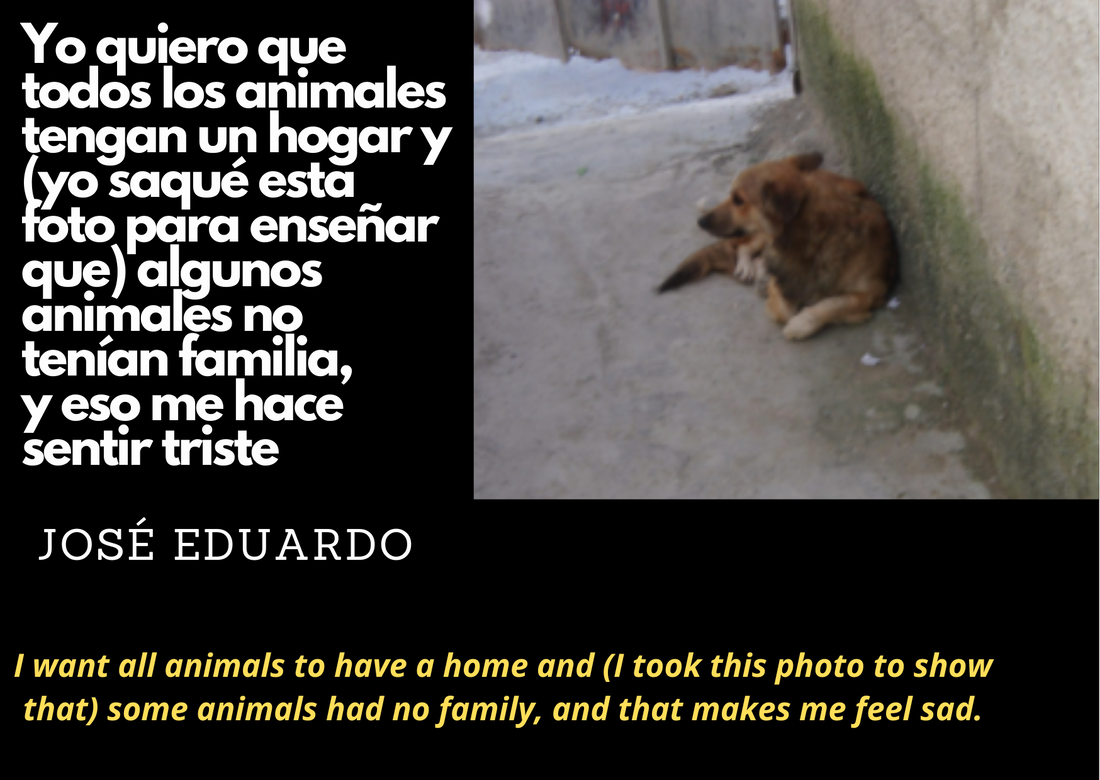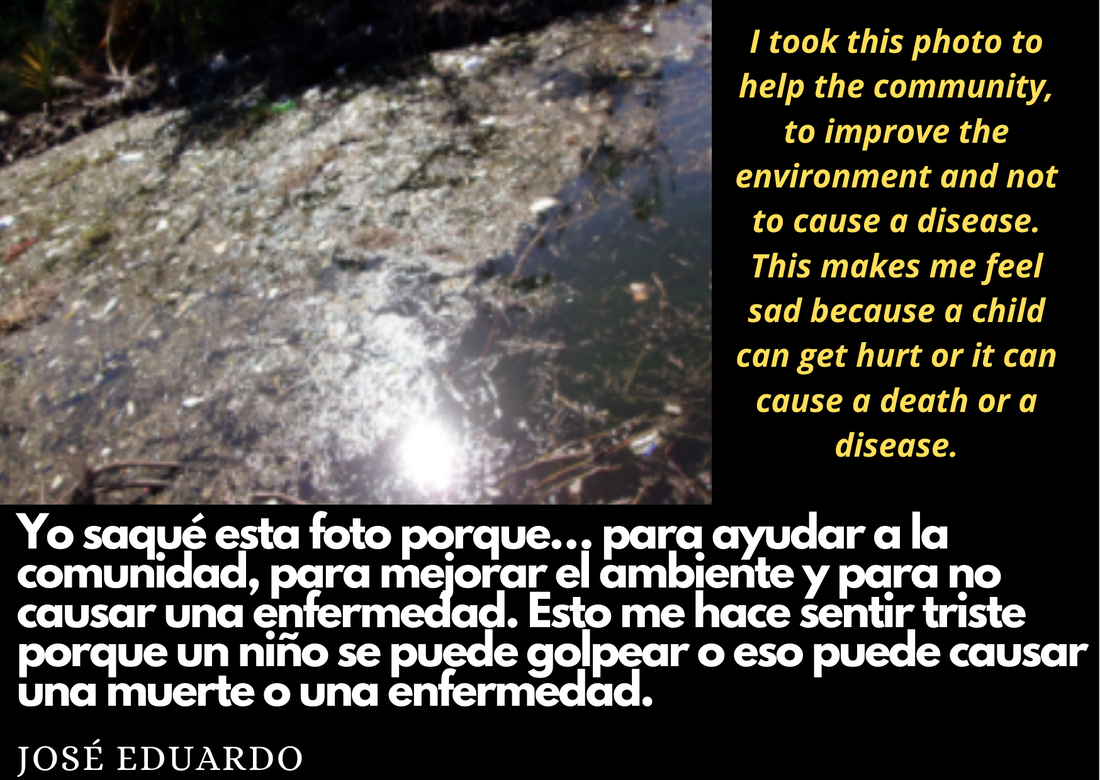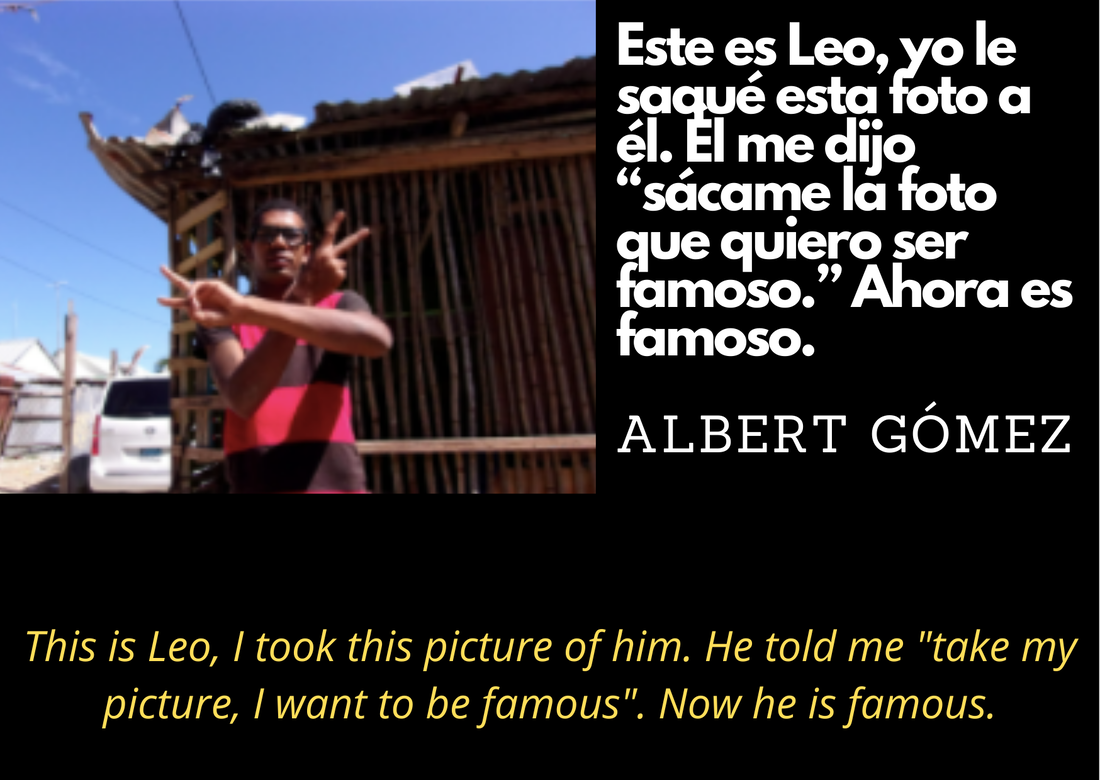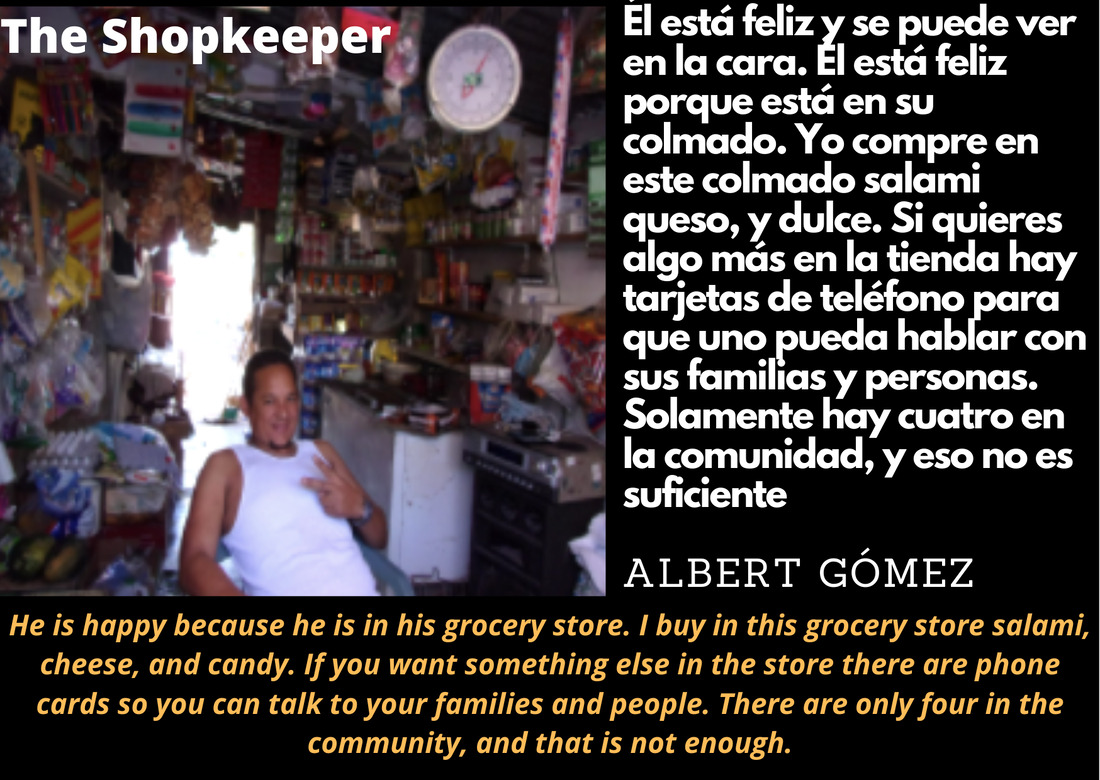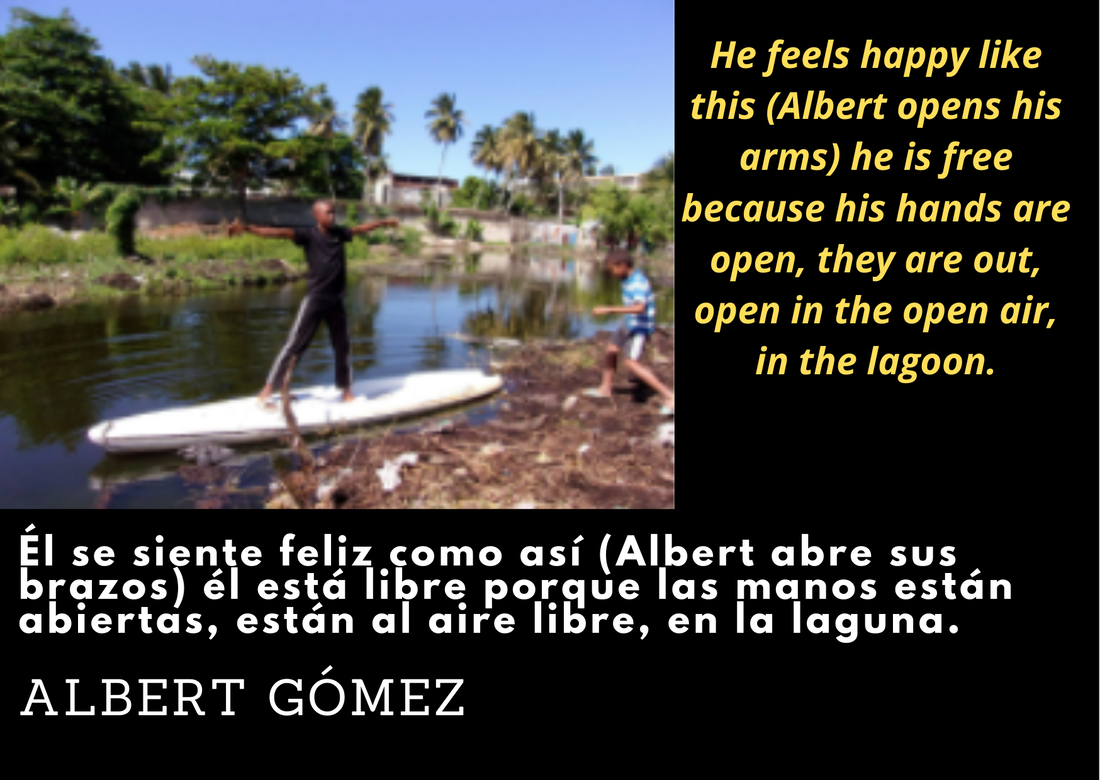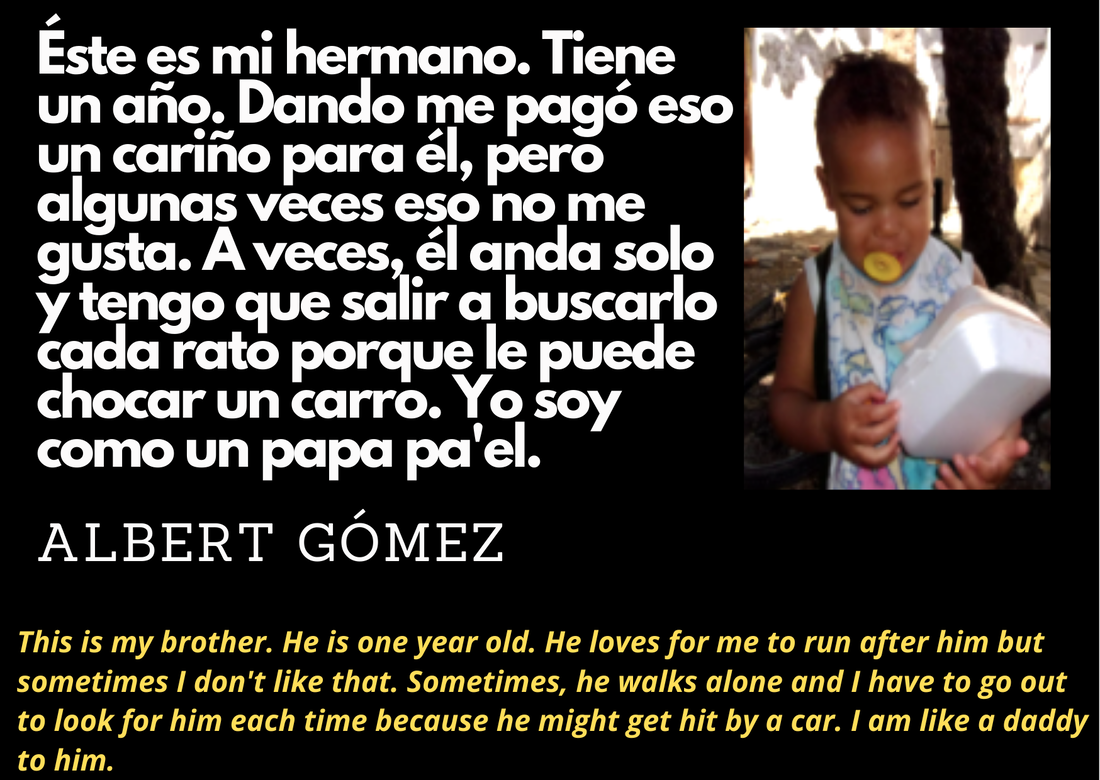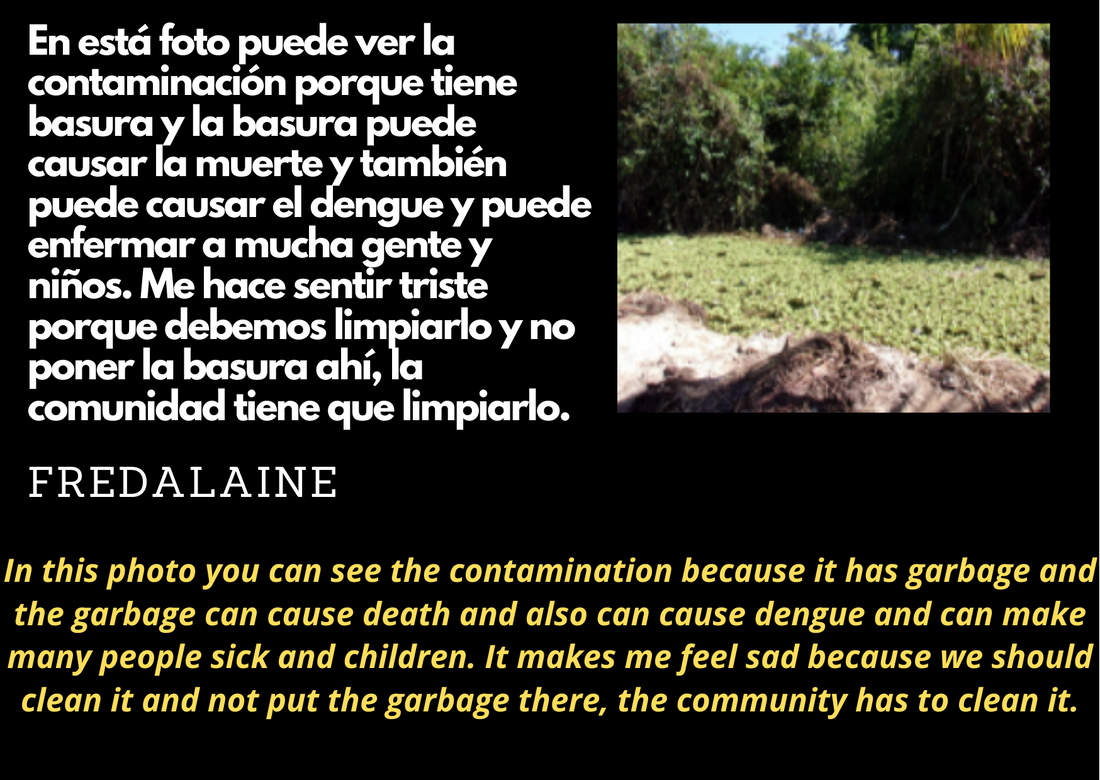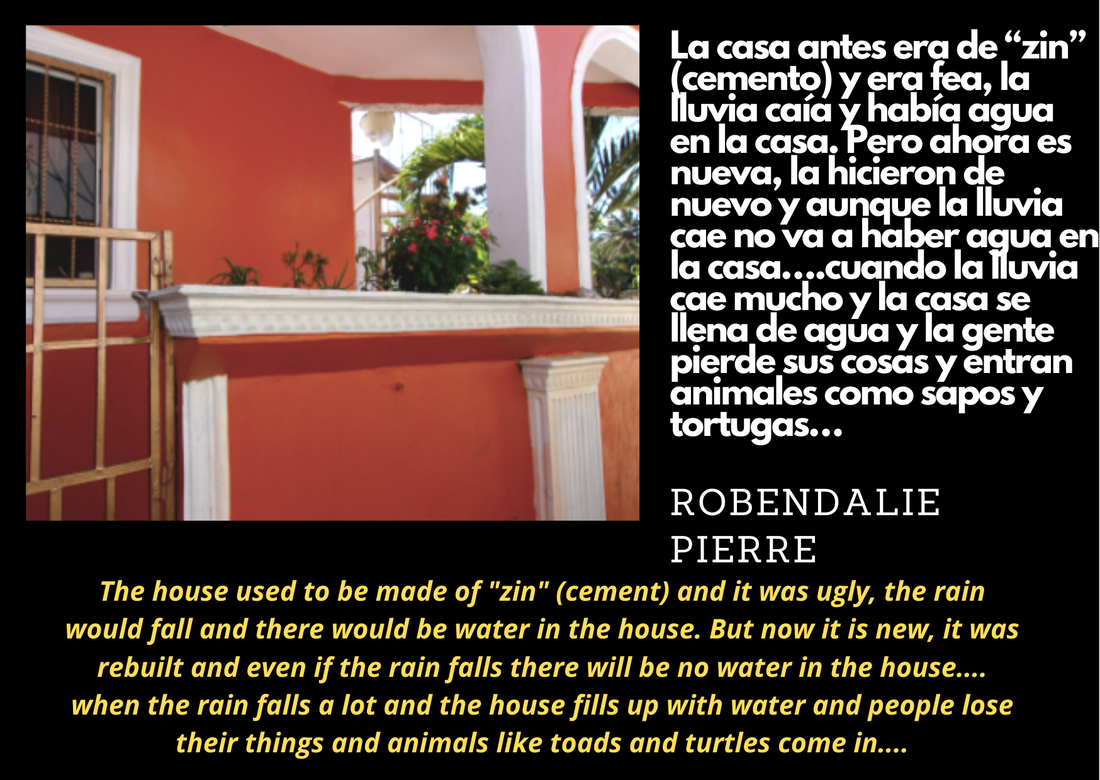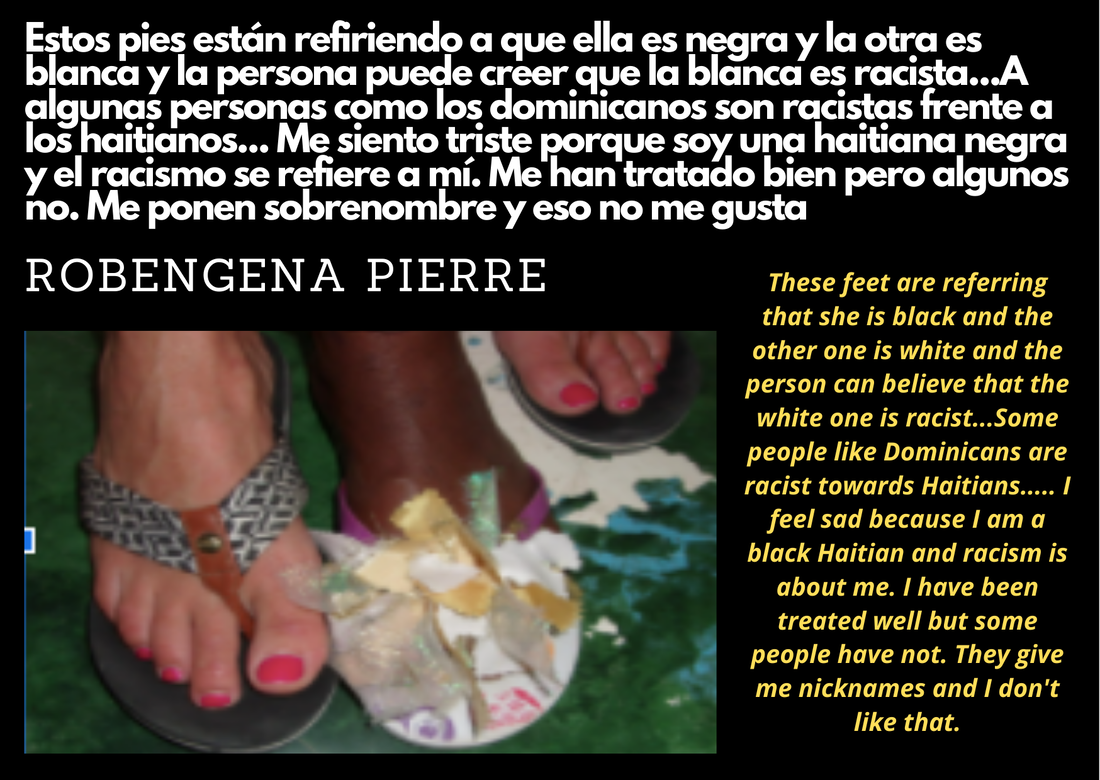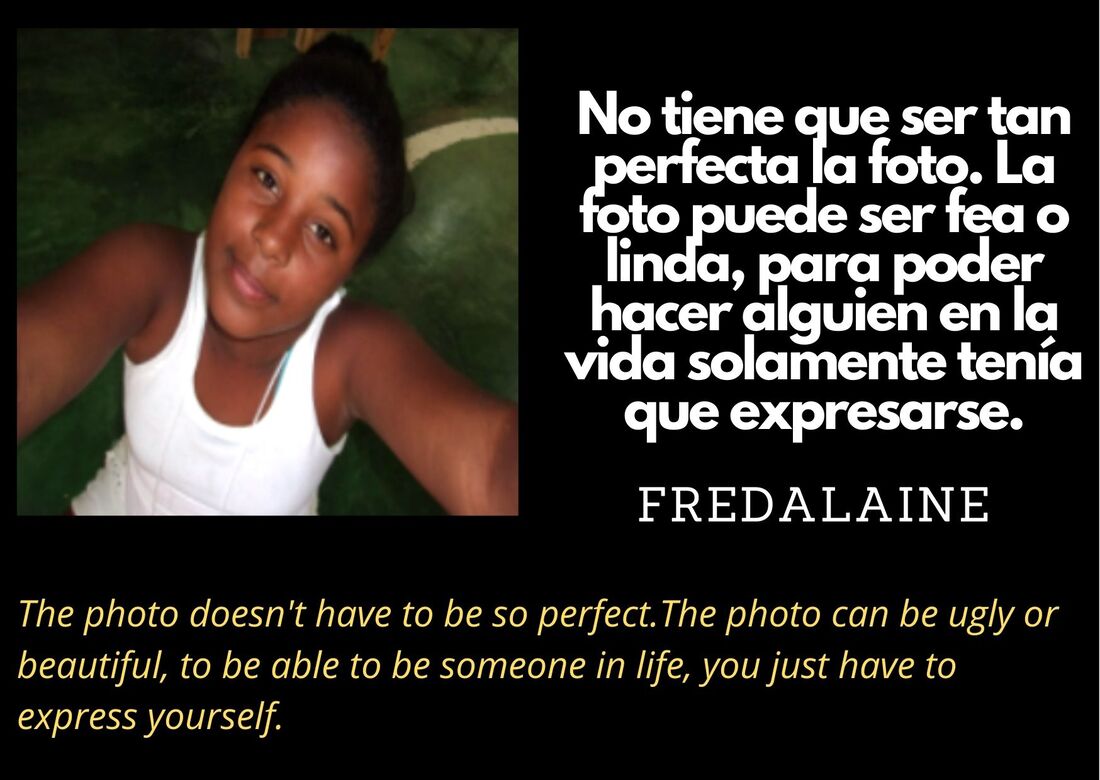-
Goals
-
Implementation
-
Outcomes
-
Photo Exhibit
<
>
Goals of the Project
During my last sabbatical, I was awarded the Kenyon Newton Chun award to work in the Dominican Republic to assist a local NGO to research and address the needs of children in Barrio Blanco. This project was a result by my previous work with Project Istwa, a non-profit which offers photovoice workshops for Haitian youth. Inspired by this project, I created a photovoice project in Barrio Blanco. Barrio Blanco is a small, racially mixed (i.e., 60% Dominican, 40% Haitian), squatter community situated on the banks of a lagoon in the town of Cabarate.
Although statistics are difficult to come by, estimates are that, at the time of this assessmen, 96% of workers in this community only earned no more than $8.00 a day, despite the fact that Barrio Blanco is located near, on the side streets, of the affluent and tourist beach resort town of Cabarate. Indeed, it was only in the last decade, in 2012, that Barrio Blanco acquired a one room schoolhouse, along with handful of concrete homes with indoor septic systems, due to the philanthropic efforts of a retired American businessman Ron Zauer and his organization Providing Opportunity . The resulting photovoice project was a community assessment of the indigent Dominicans and Haitian children who lived in this area.
With the support of Dr. Amanda Clinton, a former school psychologist and currently the Senior Director for Office of International Affairs of the American Psychological Association, we devised and conducted a month-long Photovoice Project to assist the children in this area.
During my last sabbatical, I was awarded the Kenyon Newton Chun award to work in the Dominican Republic to assist a local NGO to research and address the needs of children in Barrio Blanco. This project was a result by my previous work with Project Istwa, a non-profit which offers photovoice workshops for Haitian youth. Inspired by this project, I created a photovoice project in Barrio Blanco. Barrio Blanco is a small, racially mixed (i.e., 60% Dominican, 40% Haitian), squatter community situated on the banks of a lagoon in the town of Cabarate.
Although statistics are difficult to come by, estimates are that, at the time of this assessmen, 96% of workers in this community only earned no more than $8.00 a day, despite the fact that Barrio Blanco is located near, on the side streets, of the affluent and tourist beach resort town of Cabarate. Indeed, it was only in the last decade, in 2012, that Barrio Blanco acquired a one room schoolhouse, along with handful of concrete homes with indoor septic systems, due to the philanthropic efforts of a retired American businessman Ron Zauer and his organization Providing Opportunity . The resulting photovoice project was a community assessment of the indigent Dominicans and Haitian children who lived in this area.
With the support of Dr. Amanda Clinton, a former school psychologist and currently the Senior Director for Office of International Affairs of the American Psychological Association, we devised and conducted a month-long Photovoice Project to assist the children in this area.
|
Overview of Project
To initiate our work, Dr. Clinton and I first met with the DREAM teachers who were working with the children to discuss our project and to ascertain what needs they wanted addressed. As a result of our meetings, we came up with a schedule in which Dr. Clinton and I would provide in-service workshops to the DREAM teachers during the day on various issues related to child development and then work directly with the children in the afternoons in The Barrio Blanco Esperanza After School Program. This site serves 20 students and is staffed by two teachers who originally derived from the community. Children were approximately 12 to 16 years of age (exact ages were difficult to finalize as many of the children were not sure of their own ages). Project Aims
The aims for the project were as follows:
|
Implementation
To address these aims, we created a syllabus which detailed our daily assignments and goals. Briefly, we met with the children intensely for two weeks, in which we reviewed the fundamentals of photography and conducted a handful of community walks in order to generate ideas for their photos. During this time, we also provided the children with a brief introduction on how photography could be used to enhance emotional and visual literacy afternoons. Following this, children took photos virtually every day, and then were interviewed about their photos so that by the 3rd week, during Holy Week, photos were printed and captioned with the comments supplied by the children. Finally, during the fourth week, the children assisted in getting ready for the community photo exhibit by joining their captions and photos together. To promote the program, I created a flyer to advertise in the community. This flyer was supplied to all the children and was also posted throughout Barrio Blanco. Prompts for Photos For each photo, children were asked a series of questions based on the SHOWED technique created by Wang (199). The questions we asked were: Why did you pick this? What do you see here? What is happening? How does it make you feel? How does it relate to the theme of community building and pride? Wang, C. (1999). Photovoice: A participatory action research strategy applied to women’s health. Journal of Women’s Health, 8, 185–192. doi. 10.1089/jwh.1999.8.185 |
|
|
Outcomes of the Project
While the total number of participants varied every day, overall, we had a total of 12 children participate in the workshops (age range 8-15), with eight children showing their work in the final exhibit. In the final photo exhibit, entitled Changes in Our Community, children noted many of the issues facing their developing community. Children took approximately 30 photos each, and displayed 4-6 photos in the final exhibit. Many of the photos focused on either their family or on themselves. Apart from such personal photos, the children also took some time to take photos of their community. First, the children noted of the many changes that were occurring in their community, such as the construction of the new colorful cement homes that replaced old tin shacks, as well as the construction of a new soccer field that would give them a new place to play. Additionally, they documented many of the problems that were still troubling their community. Chief among their concerns were
Photovoice allowed the children an opportunity to note both the positive and troubling aspects of their community, which they then discussed with the members of their community who visited the photo exhibit. These issues, were in turn, presented to the DREAM project, who noted them as potential areas for future intervention. Photovoice also gave our participants a chance to voice their concerns through photography, so that in future, change could be initiated in the community. I am happy to report that since our photovoice workshop, DREAM has helped bring in garbage cans to the community, and has also built book shelves in their school house. While we are not sure that this change occurred as a direct result of our photovoice intervention, we hope that photovoice, at the very least, helped the children to see that this was an issue that could have a solution. |
At the end of the workshop, the children displayed their photos along with their captions. In total we had 12 participants in this workshop but, for various reasons, not all children displayed their work in the final exhibit.
Here is a sampling of the final photos that were presented at the photo exhibit. Permission was obtained from the children, and their caregivers, to publicly display the photos. Everyone in the photos gave their consent to be photographed and, in the cases of minors, adult caregivers gave consent for the child to be photographed. Each photographer is identified and credited for their photos. Photos are presented as they were taken with only minor edits made to cropping and color adjustment. Participants were given a hardcopy of all of their photos at the end of the exhibit. All photos were taken with Canon cameras.
Snipets from the original captions are presented below. The original captions were dictated in Spanish but are presented here with their English translation for ease of translation. Captions reflect the actual wording by the participants.
Here is a sampling of the final photos that were presented at the photo exhibit. Permission was obtained from the children, and their caregivers, to publicly display the photos. Everyone in the photos gave their consent to be photographed and, in the cases of minors, adult caregivers gave consent for the child to be photographed. Each photographer is identified and credited for their photos. Photos are presented as they were taken with only minor edits made to cropping and color adjustment. Participants were given a hardcopy of all of their photos at the end of the exhibit. All photos were taken with Canon cameras.
Snipets from the original captions are presented below. The original captions were dictated in Spanish but are presented here with their English translation for ease of translation. Captions reflect the actual wording by the participants.
Acknowledgements
I wish to thank the donors of the Newton Chun Award. While I was not able to exclusively focus on stateless children as originally stipulated in the grant, I was able to help document the needs of poor children in Barrio Blanco. These children were provided with supplemental programing that resulted in a community wide photo exhibit. Children were able to learn some techniques about photography, learned about visual and emotional literacy, which helped further develop abstract thinking. Additionally, teachers were provided with free workshops on emotional and brain development, that we hope will help them as they continue their work with the children. This grant also allowed me to provide the families with photos of their children Finally, I wish to thank for the parents for allowing me to spend time with their children and for the children themselves for allowing me into their lives. Overall, this was a wonderful experience.
I wish to thank the donors of the Newton Chun Award. While I was not able to exclusively focus on stateless children as originally stipulated in the grant, I was able to help document the needs of poor children in Barrio Blanco. These children were provided with supplemental programing that resulted in a community wide photo exhibit. Children were able to learn some techniques about photography, learned about visual and emotional literacy, which helped further develop abstract thinking. Additionally, teachers were provided with free workshops on emotional and brain development, that we hope will help them as they continue their work with the children. This grant also allowed me to provide the families with photos of their children Finally, I wish to thank for the parents for allowing me to spend time with their children and for the children themselves for allowing me into their lives. Overall, this was a wonderful experience.
